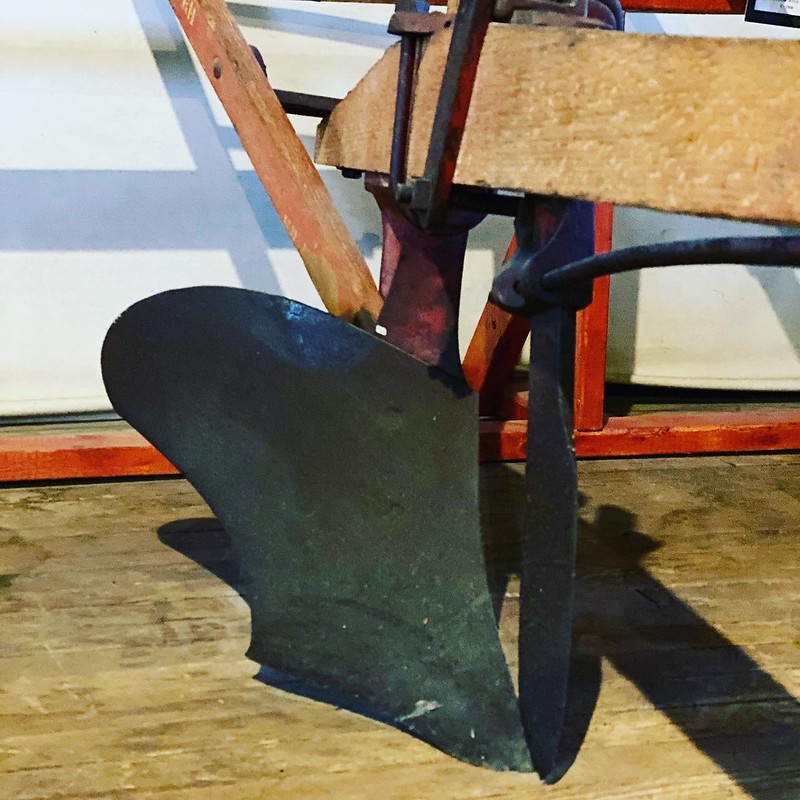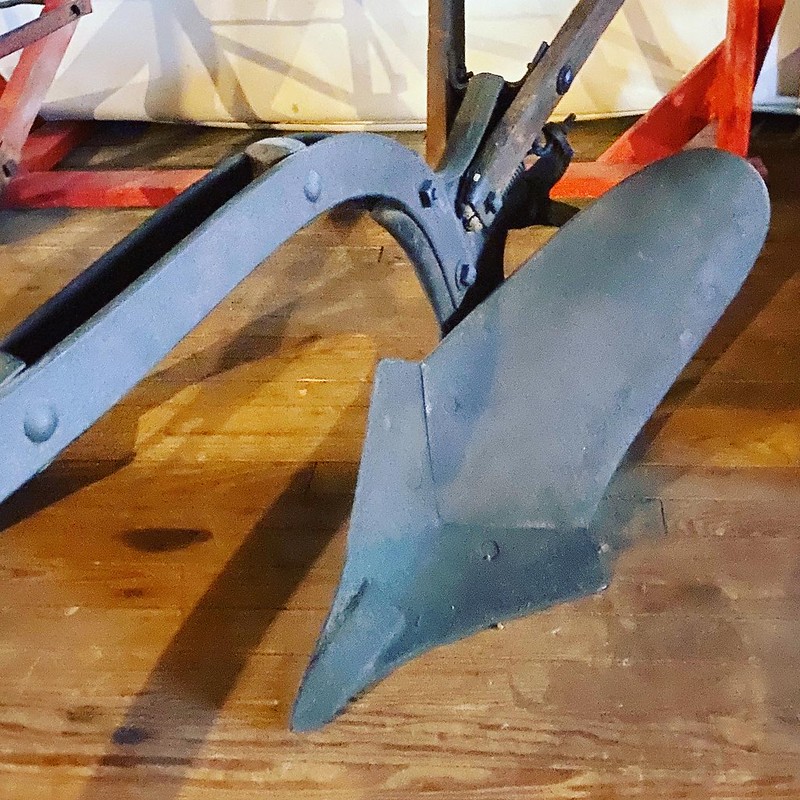Civilization arose when humankind moved beyond food collection into food production.
Up until the Neolithic era, starting at about 10,000 B.C. man mostly hunted for food. Every day would be devoted to finding the next meal, be it hunting or foraging. Only when people started keeping flocks and herds of animals, and started cultivating the soil for crops did they produce enough food to free up the days for other activities.
“Every other use which we have learned to make of the material universe depends upon our ability to produce food for a given population by means which do not themselves entirely exhaust the energy and time of that population,” wrote T.K. Derry and Trevor Williams, in 1960’s “A Short History of Technology.”
It was the invention of the plow that probably saved us from early extinction.
The idea of agriculture was perhaps an accidental one. Someone noticed that the discarded seeds and roots tossed aside the previous year – perhaps at a yearly campsite – had resprouted. Maybe they noticed that splashing water on the plants caused them to grow more hardy.
Refining techniques of cultivation, the disciple of agriculture followed.
Clearing and breaking of land, sowing of seeds, destruction of weeds, regular watering, the harvesting and the long-term storage of crops: All this needed to be sorted.
Let’s Eat
 The stomach contents of a man dating back to around 5,000 B.C. – unearthed from a Danish bog – included over a dozen or so edible weeds, suggesting that people even back then consumed multiple foodstuffs for variety.
The stomach contents of a man dating back to around 5,000 B.C. – unearthed from a Danish bog – included over a dozen or so edible weeds, suggesting that people even back then consumed multiple foodstuffs for variety.
Green and root vegetables were probably the first to be cultivated, followed by fruit, perhaps initially figs, apples, pears and plums. The walnut was introduced in northern Europe from Greece. The olive tree worked through Greece, Italy, the south of France and Spain.
Beans, peas, and lentils were cultivated in Europe, and pulses – such as the soya bean – were popular in the east. Oats were native to Europe. Wheat and barley were cultivated early in Iraq, as far back as 5,000 BC.
In addition to humans' own hunger, the cultivation also supported the domestication of animals, also already underway, and flourished with a steady source of feed.
Exhausted Soil
 After a few seasons of planting, however, the ground would lose its nutrients. So, to keep the harvests coming, it became necessary to plough into the earth, uproot the fertile ground underneath. This was especially true with the heavy soils of northern Europe.
After a few seasons of planting, however, the ground would lose its nutrients. So, to keep the harvests coming, it became necessary to plough into the earth, uproot the fertile ground underneath. This was especially true with the heavy soils of northern Europe.
Countries like Greece and Italy faced droughts and heavy winter storms that could wash essential nutrients from the soil. Nor could they rely on the animal manure yet. As a result, crop lands had to be left fallow for years at a time.
Simple pulverization would ruin the ground, however. Plows were needed to “cut a slice of the soil, to move it to one side, to turn it over,” as James Small described the act in 1784.
Humankind had already been forging tools to make their jobs easier. The reaping knife and sickle were developed to cut wild grasses, with the most primitive handles forged from antlers. Flint teeth provided the cutting element. Later, axes cleared the European forests.
With the plow, the ground was roughly tilled with a hooked branch of wood. “The deeper the ploughing, the slower the exhaustion of the soil,” the tech historians wrote.
Both Egyptians and Palistenians were both early users of the technology. By the second millennium B.C. a stronger plowshare of wood or stone came to be used. Oxen, and laterteams of horses, were used to dig deep into the ground, and could trun over an acre or two a day. Plowing at right angles could double the quantity of moist soil, it was soon found.
The characteristics of the plow include “a heavy square frame with plough-beam above and share beam below, joined by a stilt at the back and by a brace or sheet immediately behind the share,” Derry and Williams wrote.
Water Flow
 Proper tillage wasn’t the only challenge to growing crops. Mesopotamia and Egypt had another crucial challenge of supplying water to the soil.
Proper tillage wasn’t the only challenge to growing crops. Mesopotamia and Egypt had another crucial challenge of supplying water to the soil.
Rain was rare in those parts. Indeed, predicting the annual rainfall was a function that gave priests their power.
To supply water, the Egyptians first used the shaduf, which scoops water from a stream to a nearby location. Used as early as the second millennium B.C., the shaduf could raise about 600 gallons to a height of 6 feet, a day. Later, an ox-driven water wheel could irrigate half an acre a day.
Those not by a river learned to dig for water. Damming was another approach to keeping water, which then could be kept in cisterns and moved through aqueducts, canals, and underground conduits to the cities.
Photos of plows taken at the Tennessee Agricultural Museum.
